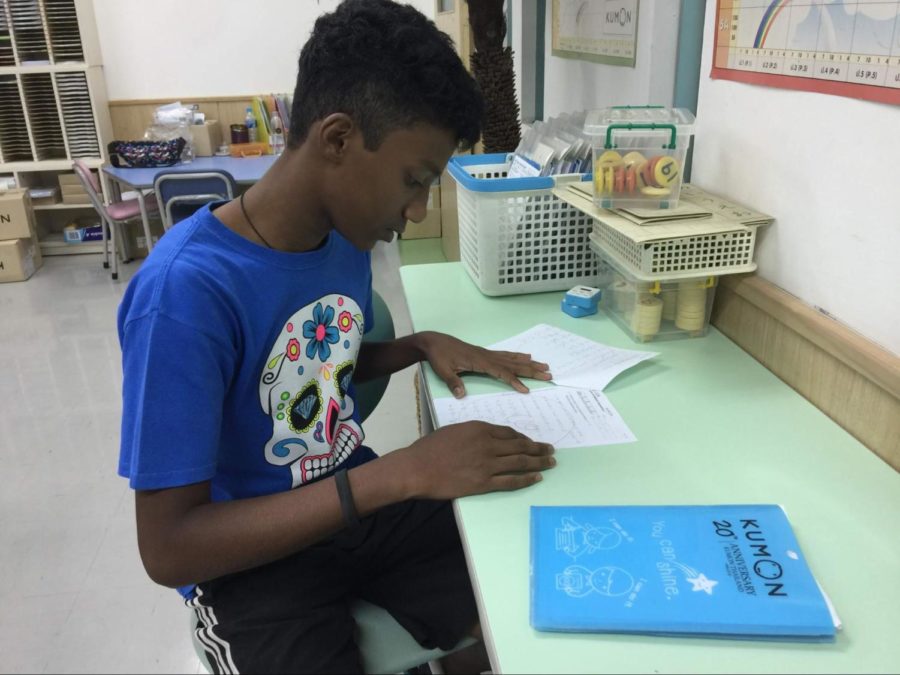A Worldwide Student: How students study in different countries
For me, the thought of going to school in a foreign country is an opportunity to challenge your perspective of different cultures around the world. Therefore, when I went to Thailand on vacation, I was intrigued by how international students work in a country that is new to their family and their education. I interviewed three students, with the intent of knowing how they educate themselves in an unfamiliar country. Sophomore Moe Ozasa explained to me her school system and how it works. At her school, NIST International School, they use the International Baccalaureate (IB) system, much like the kind we have at CHS. The teaching style of IB programs are mainly discussion-based and they do work in groups for most of the time. What was most surprising to me was the fact that they don’t use textbooks often. In regards to the competition at her school, it was no surprise to me the pressure her and her classmates were on during the school year.
“There is a lot of competition between grades at my school, at the end of the year you get an overall grade and you add up all of your overall grades from all subjects and you get a number out of 56,” Ozasa said.
“People aim to get what’s called an Academic Excellence Award, which is when you get a number of 54-56 in your overall grade. Which is almost or all A’s.”
Most international schools are funded by different countries such as America, British, and Australia schools come to set up a school system. For Vedanth Devadiga, a 13 year old going to Rasami International School, his day-to-day school life is different from Ozasa.
“I take math, English, science, Thai, French, Mandarin, history and geography, and physical education along with art and design and technology (DT). Our school requires us, international students, to take all of these languages I am taking”, Devadiga said.
Rasami International School teaches through the International General Certificate in Secondary Education curriculum (IGCSE), which was established and funded by the British. It was really fascinating to witness how different each international school works, for the previous student she told me that her teaching style is discussion based. However, because this boy is under the British curriculum, what his classroom looks like is very different.
“IB teaching is really different when it comes to classroom teaching. I feel like they really base things on discussions only and they have more difficult work and you have to research things on your own. For my school, we are more textbook based and we already learned the things, so our projects, homework, and tests are easier to prepare for”, Devadiga said.
They have so many subjects and so much competition that they deal with everyday even in middle school. I interviewed them while they were both in their math tutoring session after school, which displays how they continue to work after school to positively impact their academics. Both of these students partake in extracurriculars as well, like dance and soccer, making their schedules even tighter. All while doing this in a country unknown to them. All in all, talking to these two students and getting their view on school also let me have admiration for international students and opened my eyes to a new perspective.
Your donation will support the student journalists of Carmel High School - IN. Your contribution will allow us to purchase equipment and cover our annual website hosting costs.

































![AI in films like "The Brutalist" is convenient, but shouldn’t take priority [opinion]](https://hilite.org/wp-content/uploads/2025/02/catherine-cover-1200x471.jpg)









































![Review: “The Immortal Soul Salvage Yard:” A criminally underrated poetry collection [MUSE]](https://hilite.org/wp-content/uploads/2025/03/71cju6TvqmL._AC_UF10001000_QL80_.jpg)
![Review: "Dog Man" is Unapologetically Chaotic [MUSE]](https://hilite.org/wp-content/uploads/2025/03/dogman-1200x700.jpg)
![Review: "Ne Zha 2": The WeChat family reunion I didn’t know I needed [MUSE]](https://hilite.org/wp-content/uploads/2025/03/unnamed-4.png)
![Review in Print: Maripaz Villar brings a delightfully unique style to the world of WEBTOON [MUSE]](https://hilite.org/wp-content/uploads/2023/12/maripazcover-1200x960.jpg)
![Review: “The Sword of Kaigen” is a masterpiece [MUSE]](https://hilite.org/wp-content/uploads/2023/11/Screenshot-2023-11-26-201051.png)
![Review: Gateron Oil Kings, great linear switches, okay price [MUSE]](https://hilite.org/wp-content/uploads/2023/11/Screenshot-2023-11-26-200553.png)
![Review: “A Haunting in Venice” is a significant improvement from other Agatha Christie adaptations [MUSE]](https://hilite.org/wp-content/uploads/2023/11/e7ee2938a6d422669771bce6d8088521.jpg)
![Review: A Thanksgiving story from elementary school, still just as interesting [MUSE]](https://hilite.org/wp-content/uploads/2023/11/Screenshot-2023-11-26-195514-987x1200.png)
![Review: "When I Fly Towards You", cute, uplifting youth drama [MUSE]](https://hilite.org/wp-content/uploads/2023/09/When-I-Fly-Towards-You-Chinese-drama.png)
![Postcards from Muse: Hawaii Travel Diary [MUSE]](https://hilite.org/wp-content/uploads/2023/09/My-project-1-1200x1200.jpg)
![Review: "Ladybug & Cat Noir: The Movie," departure from original show [MUSE]](https://hilite.org/wp-content/uploads/2023/09/Ladybug__Cat_Noir_-_The_Movie_poster.jpg)
![Review in Print: "Hidden Love" is the cute, uplifting drama everyone needs [MUSE]](https://hilite.org/wp-content/uploads/2023/09/hiddenlovecover-e1693597208225-1030x1200.png)
![Review in Print: "Heartstopper" is the heartwarming queer romance we all need [MUSE]](https://hilite.org/wp-content/uploads/2023/08/museheartstoppercover-1200x654.png)





